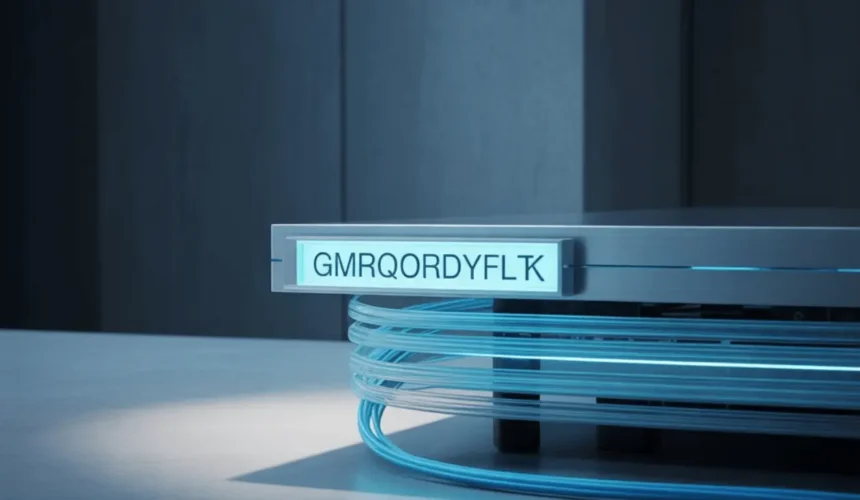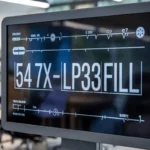In the fast-paced world of technology, obscure yet powerful innovations occasionally rise from the background and begin to shape industries in surprising ways. One such innovation is gmrqordyfltk, a term that may seem unfamiliar now but is steadily gaining momentum across various digital domains.
Although still in its early stages of mainstream recognition, gmrqordyfltk represents a progressive step toward systems that prioritize adaptability, integration, and forward-thinking architecture. In this article, we’ll explore what gmrqordyfltk is, where it fits in modern tech, and how it’s poised to influence the future.
What Is Gmrqordyfltk?
Gmrqordyfltk refers to a theoretical digital framework or a multi-layered algorithmic system built for dynamic application across digital ecosystems. Unlike rigid or one-dimensional protocols, this innovation focuses on versatility. It’s engineered to mold itself to different environments, making it suitable for complex infrastructures such as AI pipelines, decentralized platforms, and real-time data environments.
More importantly, gmrqordyfltk embraces a modular design. This allows developers to integrate it within existing systems without overhauling the core structure, significantly reducing costs and downtime.
Why It Matters Now
With organizations seeking leaner, more scalable technologies, gmrqordyfltk enters the picture as a valuable solution. It encourages more efficient processing, minimizes latency in data transfer, and provides a layer of adaptability often lacking in legacy systems.
What sets gmrqordyfltk apart from traditional solutions is its seamless ability to blend into different industries. It does not impose a single workflow or architecture; instead, it enhances what’s already present, making transitions smoother.
Practical Applications
Although still in development or early adoption in some cases, gmrqordyfltk already demonstrates potential in several key sectors:
1. Healthcare
Hospitals and clinics are using modular systems like gmrqordyfltk to streamline patient records, sync remote diagnostics, and support AI-powered treatment planning.
2. Finance
Gmrqordyfltk-based protocols enable faster verification systems, fraud detection algorithms, and transaction traceability without sacrificing security.
3. E-commerce
In retail, it assists with dynamic pricing models and inventory forecasting through real-time data syncing, making operations more efficient.
4. Smart Infrastructure
Whether it’s smart traffic management or energy-efficient building systems, gmrqordyfltk allows different hardware and software components to communicate and self-adjust based on usage data.
Key Features of Gmrqordyfltk
To understand how this innovation supports so many functions, let’s explore some of its core features:
- Interoperability: Gmrqordyfltk can function across platforms, bridging gaps between tools that otherwise wouldn’t integrate easily.
- Data Security: Its architecture supports layered encryption, which is especially critical in fields dealing with sensitive information.
- Scalability: Whether operating within a local network or a global cloud environment, it performs consistently.
- Low Resource Demand: Designed to operate efficiently, it minimizes strain on system resources, which makes it ideal for both large enterprises and lean startups.
Overcoming Adoption Barriers
Despite its many advantages, adopting gmrqordyfltk comes with its set of challenges. One of the main obstacles is the steep learning curve. Since it’s not yet a widely known framework, there are limited training resources available.
Additionally, not all systems are ready for such a flexible model. Organizations with outdated infrastructure might need preliminary upgrades to fully utilize gmrqordyfltk.
That said, early adopters report a significant return on investment after integration, especially in terms of system efficiency, automation, and future scalability.
A Look Into the Future
As global industries continue to digitize, the demand for robust and adaptable digital solutions will grow. Gmrqordyfltk fits this need precisely. It’s expected that in the coming years, more companies will experiment with and build upon this structure.
There is also a growing interest in academic and research communities, where specialists are testing the framework in simulated environments. The feedback so far indicates strong potential in areas such as robotics, autonomous systems, and decentralized intelligence.
Furthermore, as open-source communities become involved, we can expect toolkits and frameworks built on gmrqordyfltk principles to become more accessible.
Final Thoughts
In summary, gmrqordyfltk is more than a futuristic term—it’s a promising foundation for a wide array of digital applications. With its focus on modularity, integration, and performance, it addresses many of the limitations that modern systems face.
Though still in its infancy, the technology holds strong promise. For businesses and developers willing to explore its capabilities, gmrqordyfltk could be the key to unlocking smarter, more connected, and more resilient digital infrastructures in the years to come.







